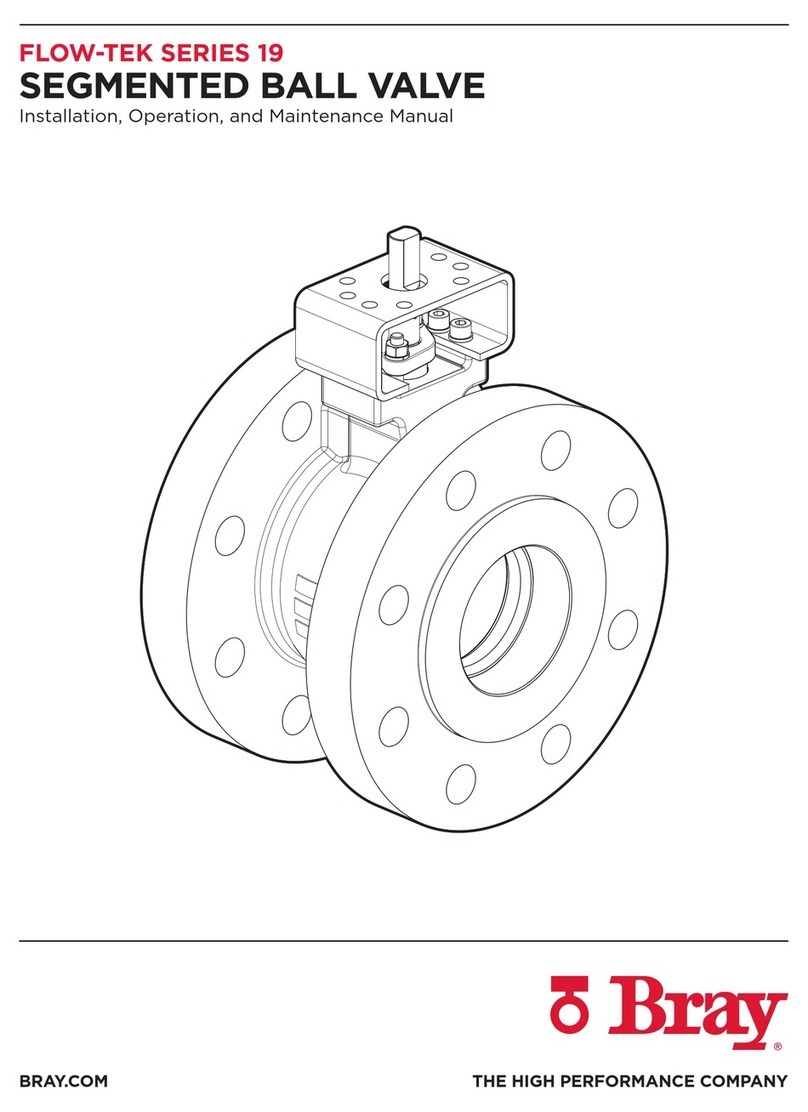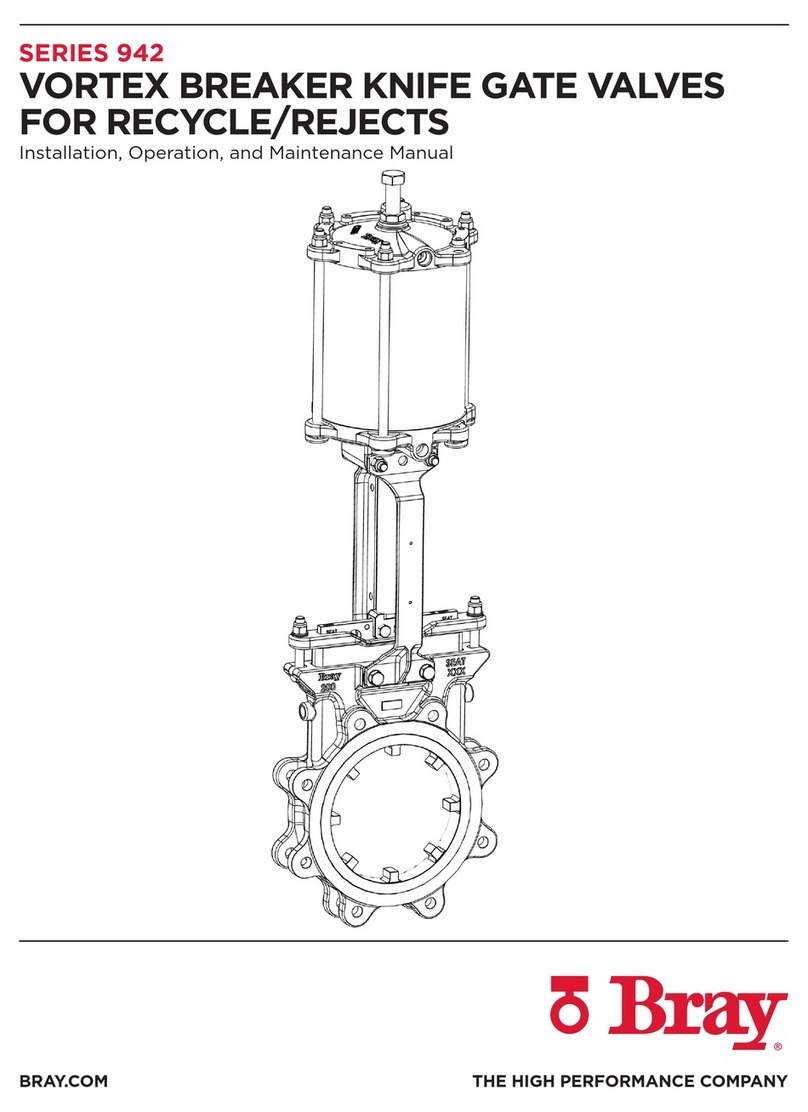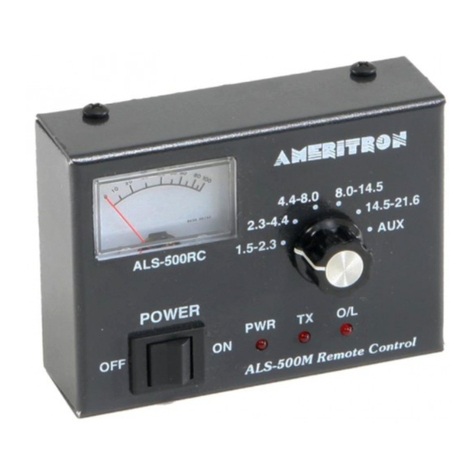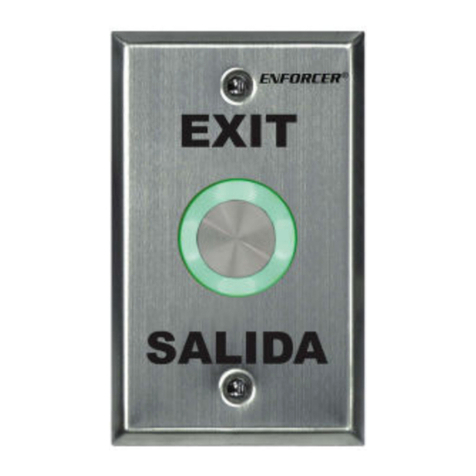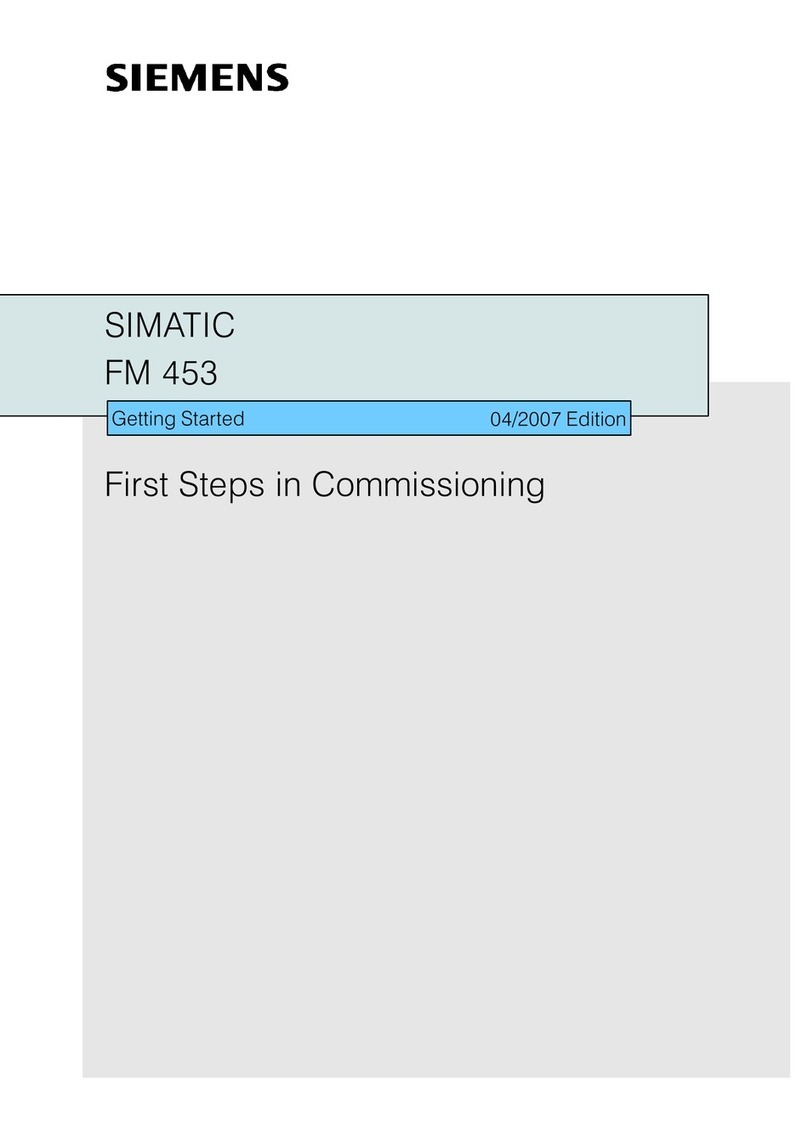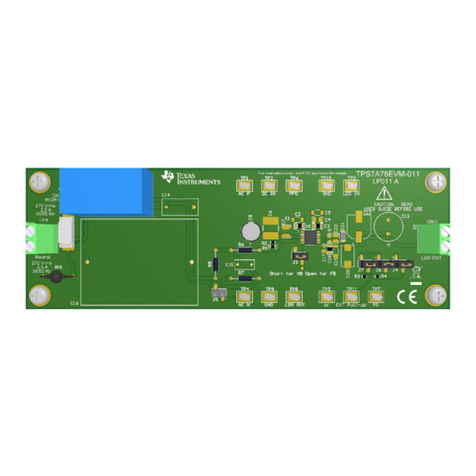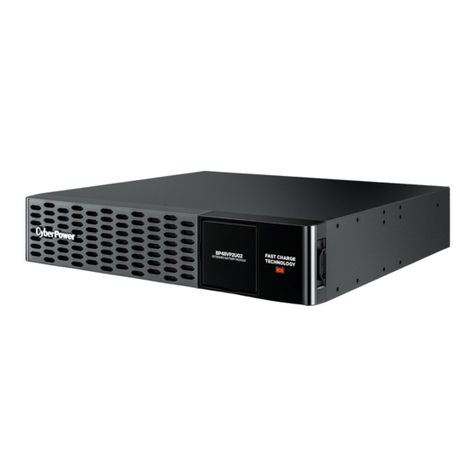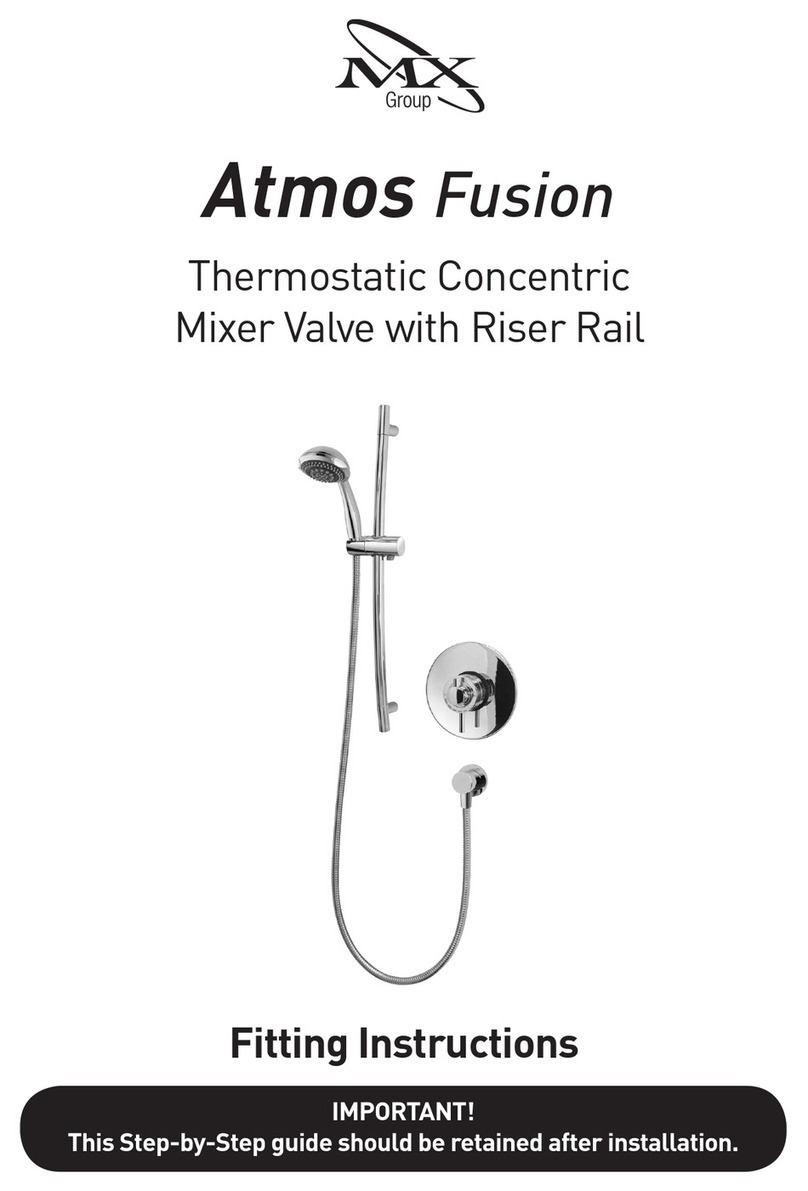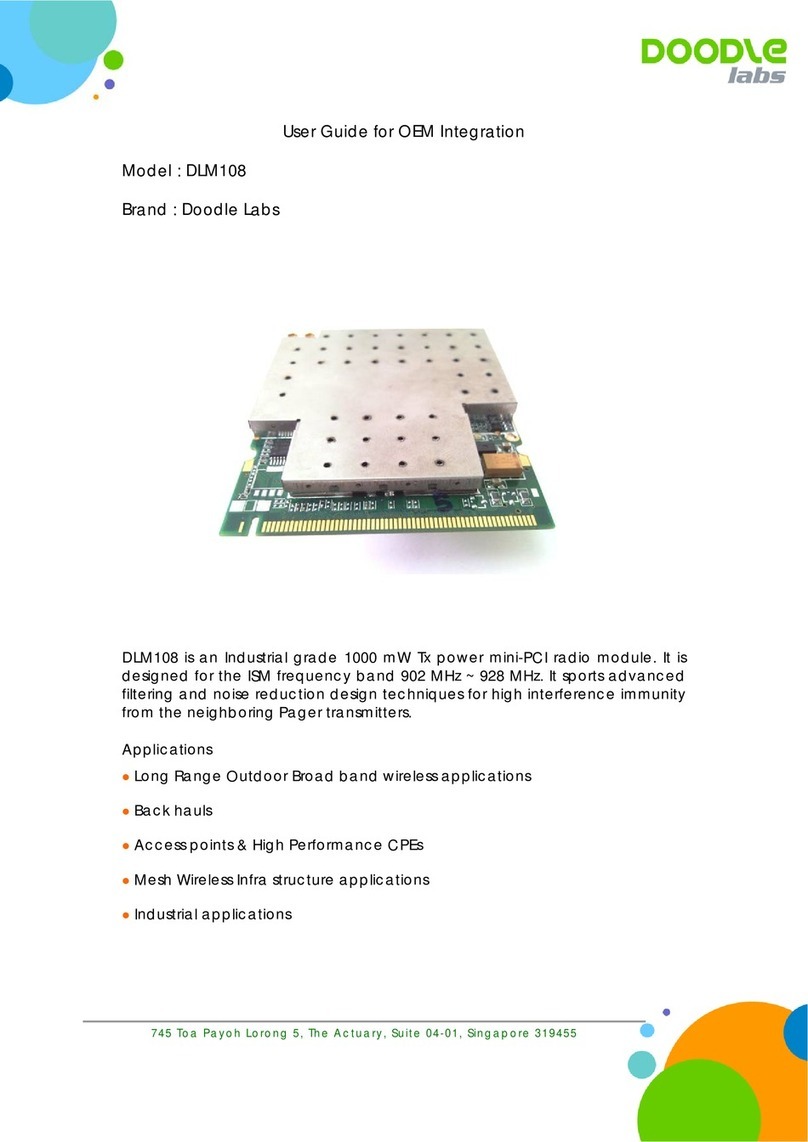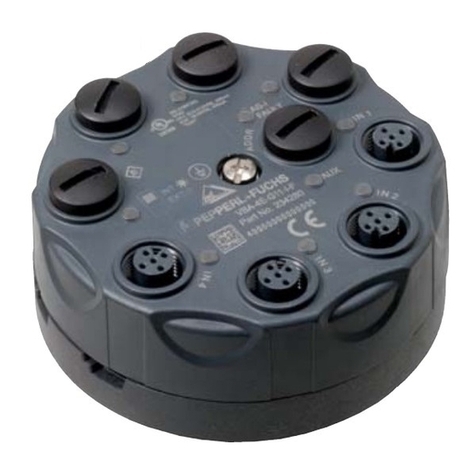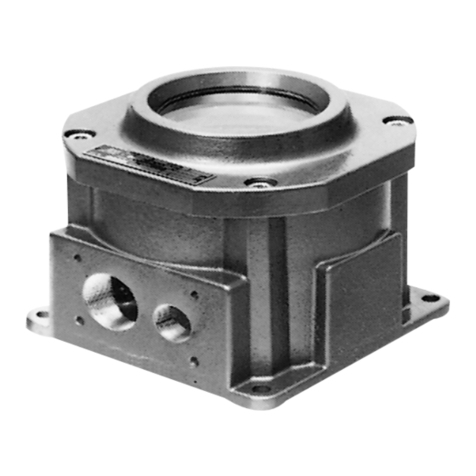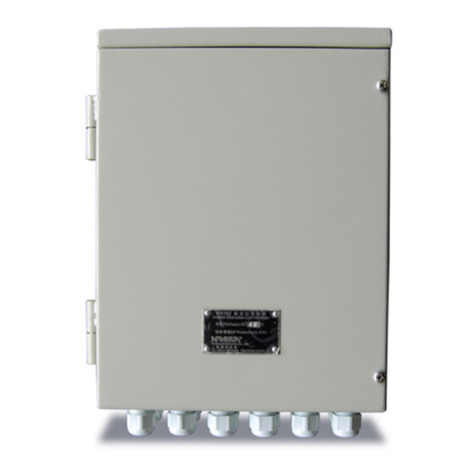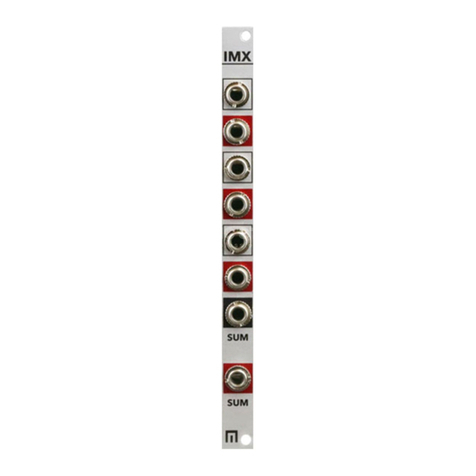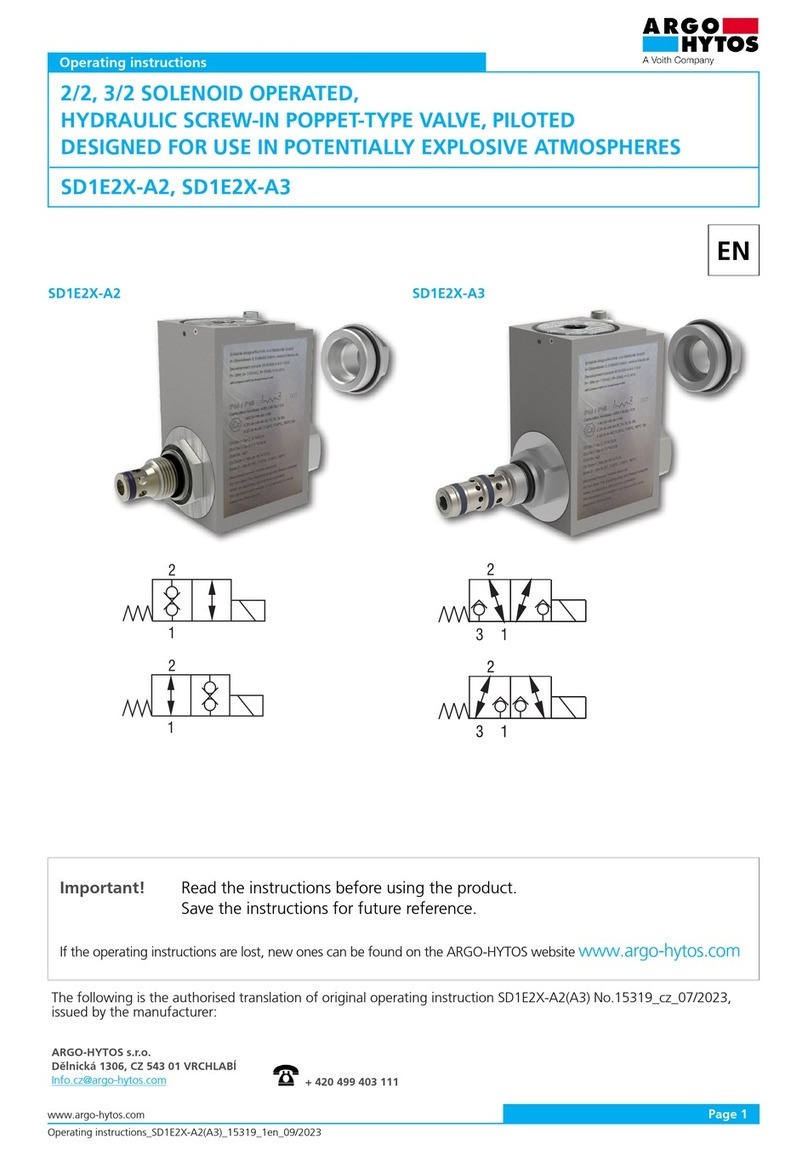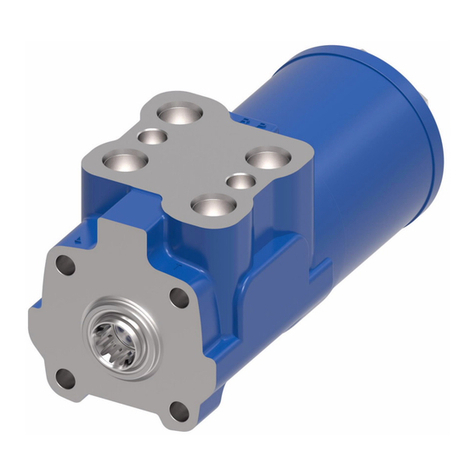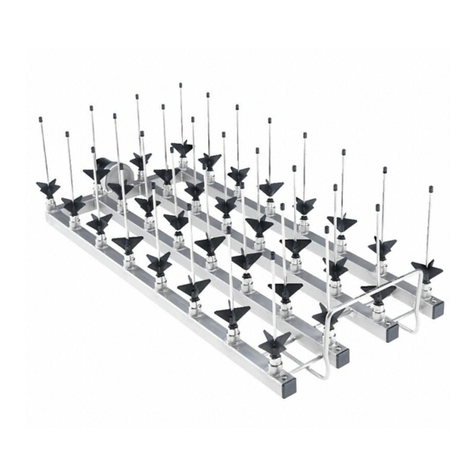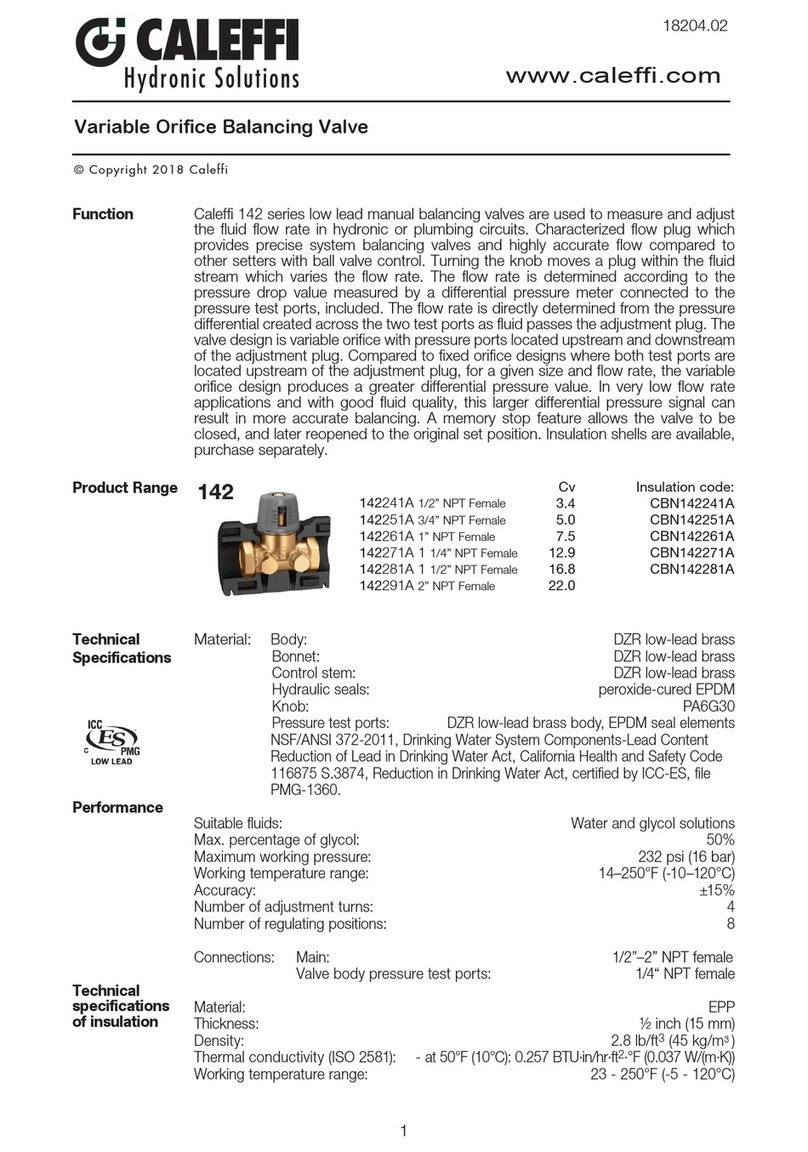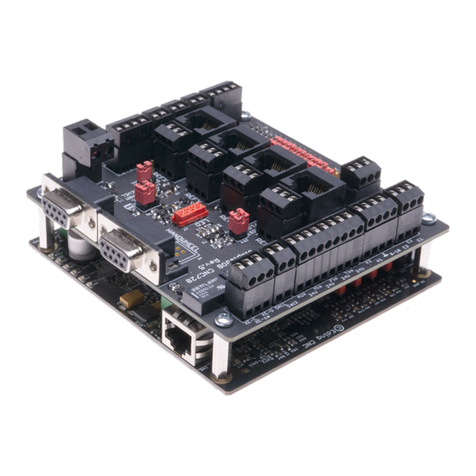Bray MCCANNALOK User manual

Bray/McCannalok Cryogenic
High Performance Butterfly Valve
Operation and Maintenance Manual

Bray/McCannalok Cryogenic Valve
Operation and Maintenance Manual
Table of Contents
Definition of Terms . . . . . . . . . . . . . . . . . . . . . . . . . . . . . . . . . . . . . . . . . . . . . . 1
Introduction. . . . . . . . . . . . . . . . . . . . . . . . . . . . . . . . . . . . . . . . . . . . . . . . . . 1
Installation . . . . . . . . . . . . . . . . . . . . . . . . . . . . . . . . . . . . . . . . . . . . . . . . . . 2
Maintenance . . . . . . . . . . . . . . . . . . . . . . . . . . . . . . . . . . . . . . . . . . . . . . . . . 3
Stem Seal Replacement . . . . . . . . . . . . . . . . . . . . . . . . . . . . . . . . . . . . . . . . . . . . 4
Seat Replacement . . . . . . . . . . . . . . . . . . . . . . . . . . . . . . . . . . . . . . . . . . . . . . . 5
Disc and Stem Replacement. . . . . . . . . . . . . . . . . . . . . . . . . . . . . . . . . . . . . . . . . . 6
Parts Diagram - Bray/McCannalok Cryogenic Valve . . . . . . . . . . . . . . . . . . . . . . . . . . . . . . 8
Parts Diagram - Bray/McCannalok Low Temperature Valve . . . . . . . . . . . . . . . . . . . . . . . . . . 9
Field Adjustments - All Valves . . . . . . . . . . . . . . . . . . . . . . . . . . . . . . . . . . . . . . . . 10
For information on this product and other Bray products please visit us at our web page - www.bray.com.

1
Bray/McCannalok Cryogenic Valve
Operation and Maintenance Manual
Read and Follow These Instructions
Save These Instructions
DEFINITION OF TERMS
indicates a potentially hazardous situation which, if not avoided, could result in death or
serious injury.
indicates a potentially hazardous situation which, if not avoided, may result in minor or
moderate injury.
NOTICE used without the safety alert symbol indicates a potential situation which, if not avoided, may
result in an undesirable result or state, including property damage.
INTRODUCTION
The Bray/McCannalok Cryogenic high-performance butterfly valve combines the advantages of trunnion-type ball valves
with the easy operation, light weight, and low cost of butterfly valves. One basic design is suitable for a wide range of
services, including liquid oxygen, LNG and air separation.
Features include:
• Tight shutoff provided throughout a wide range of operating conditions.
• Suitable for both modulating and on/off services, the Bray/McCannalok butterfly valve is easily automated with your
choice of manual operators, electric and pneumatic actuators, positioners, and controls.
Additional information about Bray/McCannalok butterfly valves – including application data, engineering specifications,
and actuator selection is available from your Bray distributor or sales representative.

2
Bray/McCannalok Cryogenic Valve
Operation and Maintenance Manual
INSTALLATION
1. The Bray/McCannalok valve is designed to be mounted
between ANSI flanges. When the valve is open, the
disc will extend into the pipe on both sides of the valve
– further on the body side than the seat retainer side
of the valve. Piping must be large enough to allow the
disc to clear the pipe. The charts on page 3 show
the minimum pipe ID allowable, and standard pipe IDs.
In general, Class 150 valves will clear Schedule 40
pipe, and Class 300 valves will clear Schedule 80 pipe
adequately.
2. If handle or actuator has been removed do not rotate
disc beyond full open or closed position – this could
cause damage to sealing surfaces.
NOTE: Bray/McCannalok valves are equipped with travel
limiters to prevent over closure. The valve is opened by
turning counterclockwise, closed by turning clockwise. The
double “D” flats or keyway at the top of the stem is parallel
to the disc edge.
3. Verify and check the preferred flow direction prior to
installation.
Positive shutoff will be obtained with the valve in either
position; however, installation with the seat retainer
upstream will give longer service life, especially in
erosive services.
4. With the disc in closed position, carefully center valve
between flanges. Guide holes (wafer pattern valve)
or tapped holes (lugged valves) to match ANSI Pipe
flanges and assist in positive alignment.
5. Use standard torques when bolting valve into the line.
The seat is sufficiently compressed by the seat retainer,
and additional force from flange bolting is not required.
6. Gaskets should conform to the requirements of API
Standard 601, Edition 3 for ASME/ANSI B16.5 class
flanges. Spiral wound gaskets, such as Flexitallic CG
or CGl series, conforming to ASME/ANSI B16.20 are
acceptable.

3
Bray/McCannalok Cryogenic Valve
Operation and Maintenance Manual
MAINTENANCE
1. Reasonable precautions should be taken before
beginning work on the valve. Protective clothing, as
required by the specific line fluid, should be worn.
Before removing handle or the actuator from the valve,
or before removing seat retainer from a valve in dead end
service, close the valve and depressurize the line.
2. The eccentric design of the Bray/McCannalok may allow
line pressure to open the valve if the handle/actuator is
not in place while the valve is under pressure.
Do not pressurize the line without a handle or actuator
on the valve.
3. The Bray/McCannalok valve must be in the closed
position to be removed from the line.
4. Begin all work on a valve that has been removed from
the line by cleaning the valve, removing any grit or
scale.
When handling the valve, care should be taken not to
scratch the disc edge or seat.
5. Replacement seats, seals and other parts are available
from authorized distributors. Contact your distributor
or sales representative for details of price and delivery.
Verify if the valves are required to be cleaned for oxygen
service. Depending on the application, the valves may
need to be cleaned and assembled at a qualified oxygen
cleaning facility.
NOTES:
1. Minimum I.D. of pipe with recommended clearances
(per API 609) have been calculated by adding the
minimum I.D. with zero clearance to a minimum
recommended diametric clearance for each pipe size.
2. These charts assume that the pipe is on the body side
of the valve and that the pipe is perfectly centered. The
seat retainer side of the valve will always have more
clearance than the body side.
3. A minimum of 1/16” thick gasket is used between the
pipe flange and valve body face.
4. When using a pipe whose I.D. is smaller than the
recommended minimum inside diameter of pipe
with adequate clearance, a chamfer of 45° should be
provided on the end of the pipe so that it clears the
disc.
Table 1 -
NOMINAL INSIDE DIAMETER OF PIPE
Valve Size Schedule
In.
(mm) 40 80
2.5 2.469 2.323
(65) (62.713) (59.004)
3 3.068 2.900
(80) (77.927) (73.660)
4 4.026 3.826
(100) (102.260) (97.180)
5 5.047 4.813
(125) (128.194) (122.250)
6 6.065 5.761
(150) (154.051) (146.329)
8 7.981 7.625
(200) (202.717) (193.675)
10 10.020 9.564
(250) (254.508) (242.926)
12 11.938 11.376
(300) (303.225) (288.950)
Table 2 -
MINIMUM INSIDE DIAMETER OF PIPE
WITH THE RECOMMENDED CLEARANCE
Valve Size Class
In.
(mm) 150 300
2.5 2.28 2.28
(65) (57.91) (57.91)
3 2.86 2.86
(80) (72.64) (72.64)
4 3.72 3.72
(100) (94.49) (94.49)
5 4.80 4.80
(125) (121.92) (121.92)
6 5.88 5.75
(150) (149.35) (146.05)
8 7.80 7.56
(200) (198.12) (192.02)
10 9.78 9.44
(250) (248.41) (239.78)
12 11.74 11.31
(300) (298.20) (287.27)

4
Bray/McCannalok Cryogenic Valve
Operation and Maintenance Manual
STEM SEAL REPLACEMENT
Refer to drawings on page 9 and page 8 for parts
identification.
1. If required, remove handle assembly. Remove socket
head cap screws (8) and lock washers (7). Remove
mounting bracket (9). For actuated valves, unbolt
mounting bracket from body and lift actuator assembly
off stem.
NOTICE
Note assembly positions before removal..
2. Remove gland retainer nuts (18) and lock washers (17).
Remove gland retainer (15) anti-blowout retaining
ring or split ring (14) (depending on size), grounding
washer (12) and gland ring (13).
3. Hook out stem seals (11).
When handling stem seals, care should be taken not to
scratch stem or stuffing box bore.
Do not remove thrust washer (10), unless further valve
disassembly is required.
4. Examine stuffing box bore and stem, clean as necessary
to remove any corrosion or foreign matter before
installing new seals.
5. Install new seals in stuffing box one at a time. Stagger
seal ring joints 180° apart when installing. Tamp each
ring to bottom before installing next ring.
6. Install grounding washer (12) on top of the stem seals
with the tangs facing down.
Table 3 -
TOTAL NUMBER OF STEM SEALS
Valve Size Class
150
Material
TFE
Class
300
Material
TFE
in. (mm)
2.5 (65) 4444
3(80) 4444
4(100) 4444
5(125) 4444
6(150) 4444
8(200) 5555
10 (250) 5555
12 (300) 5555
NOTICE
On the larger valves it will be necessary to compress each
seal before adding the next.
7. Slide gland ring (13) over stem on top of grounding
washer. Install anti-blowout retaining ring or split ring
(14) (depending on valve size). Slide gland retainer (15)
over stem and onto gland studs (16). Place lockwashers
(17) and hex nuts (18) on studs (16) and tighten finger
tight. Tighten gland nuts (18) evenly and alternately to
the proper torque value given in Table 4 on page 5.
8. Remount actuator, or mounting bracket (9) with lock
washers (7) and cap screws (8) and handle assembly.
9. Operate valve open and closed several times to check
for binding and to set the stem seals. Loosen gland
nuts (18) and retighten to torque value given in Table 4
on page 5.

5
Bray/McCannalok Cryogenic Valve
Operation and Maintenance Manual
SEAT REPLACEMENT
Refer to drawings on page 9 and page 8 for parts
identification. With the disc in the closed position, remove
the valve from the line.
1. Lay the valve down with the disc in the closed position
and the seat retainer side facing up.
2. Remove the socket head cap screws (24), the seat
retainer (23), and seat (21).
3. Carefully clean the seat area in the body and seat
retainer. Remove foreign matter, dirt, oil, etc. Check
disc seating area for nicks or scratches.
4. With the disc in the CLOSED position, place the new
seat (21) on disc (2), carefully centering it in the recess
in the body.
5. Align the holes in the seat retainer (23) with matching
holes in body and carefully place in position on top of
seat (21).
6. Install the retainer gasket.
7. Place seat retainer over seat with seat retainer bolt
counterbore facing away from the face of the body.
Do not shift the retainer in order to align holes. It may
shift the seat from its correct position.
8. Make sure that the seat remains centered with body
when positioning seat retainer.
9. Wrap the thread of the socket head cap screws with
white PTFE/Teflon tapes in a clockwise position.
Step 1: Install the socket head cap screws finger tight
to the body through the seat retainer counter bores.
Step 2: Tighten the cap screws to approximately 30%
of the torque value listed in Table 4 on page 5 in a
crisscross pattern.
Step 3: Repeat Step 2, increasing the torque value to
approximately 60% of the final torque value.
Step 4: Repeat Step 3, increasing the torque value to
the final required torque value.
Step 5: Open the disc. Re-torque all cap screws to the
final required torque value.
10. A final tightening should be checked prior to
installation. Operate valve several times and examine
seat for any damage before reinstalling the valve in the
line.
11. Operate valve several times and examine seat for any
damage before reinstalling the valve in the line.
Table 4 -
GLAND RETAINER NUT AND SEAT RETAINER SCREW
TORQUES - Lb-in (N•m)
Valve
Size Gland Nut Seat Retainer
Screws
in.
(mm) 150 300 150 300
3 60 60 100 100
(80) (7) (7) (11) (11)
4 60 60 175 175
(100) (7) (7) (20) (20)
6 80 120 100 175
(150) (9) (14) (11) (20)
8 80 140 175 175
(200) (9) (16) (20) (20)
10 110 190 175 300
(250) (12) (21) (20) (34)
12 130 220 300 300
(300) (15) (25) (34) (34)

6
Bray/McCannalok Cryogenic Valve
Operation and Maintenance Manual
DISC AND STEM REPLACEMENT
Refer to drawings on page 9 and page 8 for parts
identification.
NOTICE
Stem and disc are supplied as a matched set with taper
pins and are to be replaced as a set.
1. For handle-operated valves remove handle assembly.
Remove socket head cap screws (8) and lock washers
(7). Remove mounting bracket (9). For actuated valves,
unbolt mounting bracket from body and lift actuator
assembly off stem.
NOTICE
Note assembly positions before removal.
2. Remove gland retainer nuts (18) and lock washers (7).
Remove gland retainer (15), anti-blowout retaining ring
or split ring (14) (depending on valve size), grounding
washer (12) and gland ring (13).
3. Hook out stem seals (11).
Take care not to scratch stem or stuffing box bore.
4. Remove locating plug (20) and gasket (19).
5. Remove cap screws (24), seat retainer (23), and seat
(21).
6. Turn disc to the full open position and drill out tack
welds on large end of taper pins (4).
Take care to support valve so that disc surfaces are not
scratched.
Drill sizes to remove tack welds as given in Table 5 on
page 7. Use center-punch to dimple center of tack
welds prior to drilling.
7. Place valve in flat position, with flat face of disc up.
Support disc and body on wooden blocks to protect
disc and body surfaces. Disc will rest in partially open
position.
8. Knock out taper pins (4) using a rod or punch on small
end of pin (opposite tack weld). It may be necessary to
lift body and rotate disc slightly to do this. Make sure
disc is resting on wood block since it will swing freely
on stem with pins removed. When pins (4) are out, lay
body down so disc and body are evenly supported on
flat surface to lift body and rotate disc slightly to do
this. Make sure disc is resting on wood block since it
will swing freely on stem with pins removed. When
pins (4) are out, lay body down so disc and body are
evenly supported on flat surface.
9. Using a brass bar or drift punch, knock stem (3) loose
and pull from body. After long or severe service this
may take considerable force. Be careful not to damage
bearings, spacers or body.
Be careful not to damage bearings, spacers or body.
Disc spacers (5) are used at top and bottom of disc
to properly position disc in body. Proper spacers
were selected at initial assembly and rarely require
replacement. The location of these spacers should
be noted, and the spacers marked at disassembly so
that they are reinstalled in the same positions, top and
bottom.
10. Separate body from disc, and remove thrust washer
(10) from packing bore.
11. Examine stem bearings (6) for excessive wear. If removed
from body, note position and mark to reinstall in same
location. If bearing liner is worn through to the shell,
or severe damage is evident they should be replaced.
Replacement is rarely needed.
12. Clean body thoroughly to remove all dirt, foreign
matter, rust, etc.
13. Place the body (1) flat, seat retainer side up, and
support it on wooden blocks sufficiently above the
work surface as to facilitate insertion of the disc (2) in
open position. Lower the disc into position, aligning
the bores in body and disc.
14. Insert new stem (3) in body (1) with large end of the
taper pin holes toward the top. Assemble disc spacers
(5) as stem (3) is inserted, making sure that spacers are
returned to original locations as marked.
15. Align taper pin holes in disc and stem, and install taper
pins (4). Drive pins in tightly with rod or punch, and
tack weld each pin (4) to disc (2) at large end of pin.
16. Install new gasket (19) on locating plug (20) and install
plug in body.

7
Bray/McCannalok Cryogenic Valve
Operation and Maintenance Manual
17. Install new stem seals, following instructions in “Stem
Seal Replacement” section. (See page 4)
18. Install new seat, following instructions in “Seat
Replacement” section. (See page 5)
19. Remount handle assembly or actuator, and operate
valve several times to verify proper operation. Examine
disc and seat for any damage before reinstalling in line.
Table 5 -
DRILL SIZE TO REMOVE TACK WELD
Valve Size Class
in.
(mm) 150 300
2.5 .234 15/64 .234 15/64
(65) (5.943) (5.943)
3 .234 15/64 .234 15/64
(80) (5.943) (5.943)
4 .234 15/64 .234 15/64
(100) (5.943) (5.943)
6 .234 15/64 .234 15/64
(150) (5.943) (5.943)
8 .234 15/64 .234 15/64
(200) (5.943) (5.943)
10 .234 15/64 .234 15/64
(250) (5.943) (5.943)
12 .234 15/64 .234 15/64
(300) (5.943) (5.943)

8
Bray/McCannalok Cryogenic Valve
Operation and Maintenance Manual
8
9
18
17 15
16 14
13
12
11
10
6
25
7
3
4
5
5
21
22
23
2
6
19
20
1
24
PREFERRED FLOW
DIRECTION
ITEM NO. DESCRIPTION
1 Body
2 Disc
3 Stem
4 Taper Pin
5 Disc Spacer
6 Bearing
7 Lock Washer
8S Socket Head Cap Screw
9M Mounting Bracket
10 Thrust Washer
11 Stem Seal
12 Grounding Washer
13 Gland Ring
14 Retaining Ring or Split Rings
15 Gland Retainer
16 Stud
17 Lock Washer
18 Nut
19 Disc
20 Locating Plug
21 Seat
22 Retainer Gasket
23 Seat Retainer
24 Socket Head Cap Screw
25 Bonnet
PARTS DIAGRAM - Bray/McCannalok Cryogenic Valve

9
Bray/McCannalok Cryogenic Valve
Operation and Maintenance Manual
3
8
9
7
16
15
14
13
12
11
10
4
1
2
19
5
21
23
24
17
18
6
5
6
22
20
PREFERRED FLOW
DIRECTION
ITEM NO. DESCRIPTION
1 Body
2 Disc
3 Stem
4 Taper Pin
5 Disc Spacer
6 Bearing
7 Lock Washer
8S Socket Head Cap Screw
9M Mounting Bracket
10 Thrust Washer
11 Stem Seal
12 Grounding Washer
13 Gland Ring
14 Retaining Ring or Split Rings
15 Gland Retainer
16 Stud
17 Lock Washer
18 Nut
19 Disc
20 Locating Plug
21 Seat
22 Retainer Gasket
23 Seat Retainer
24 Socket Head Cap Screw
PARTS DIAGRAM - Bray/McCannalok Low Temperature Valve

Bray/McCannalok Cryogenic Valve
Operations and Maintenance Manual
FIELD ADJUSTMENTS - ALL VALVES
Stem Seal Leakage – Should leakage occur at the stem seals,
it may be stopped by retightening the gland retainer nuts to
the values specified in Table 4 on page 5.
NOTICE
Do not overtighten gland nuts, as this may cause increased
operating torque and improper valve operation or closure.
If the leakage cannot be stopped by this action, the stem
seals require replacement.
Adjusting Valve Closure – Valves with gear actuators or
electric/pneumatic actuators may require adjustment of the
travel stops in the actuator to properly close valve for tight
shut-off. The following procedure should be followed to set
travel or limit stops.
(It is recommended that the valve must be removed from line
for this procedure and actuator mounting.)
1. Using a straight-edge and vernier or depth caliper,
measure the distances from the face of the seat retainer
to the disc (valve closed) face at the 3 o’clock and 9
o’clock positions (stem is at 12 o’clock position). The
measurements must agree within 1/16” (0.062”).
2. If they do not agree, disc must be rotated in the direction
of the larger dimension. If the 3 o’clock dimension is
larger, the disc is not fully closed, and must be rotated
in the “close” direction more. If 9 o’clock dimension is
larger, disc is over-closed, and must be opened slightly.
3. The valve disc is at the full open position when the disc is
perpendicular to the body. Set the “open” actuator stop
for this position.
Do not allow the valve to over-open as this may damage
the disc seating surfaces by hitting body or attached piping.
4. On gear operators, loosen and adjust the closing stop
screw to permit proper disc positioning. Adjust and lock
down when disc closure is within measured tolerance
in step 1. Open and close valve; recheck measurements
before reinstalling in line.
NOTICE
The setting of the actuation device’s close travel stop is
important.
The valve has an internal travel limiter to ensure valve disc
cannot be over closed.
To ensure that the valve travel limiter is not damaged, the
actuator close travel stop bolt must be at a position just
before valve disc contacts it’s travel limiter.
5. For other power actuators, consult the manufacturer’s
instructions for setting travel stops, as these vary with
actuator model and type.
6. If removing the valve from the line is not practical, as a
crude remedy the disc can be placed into a position in
the seat at which the leakage stops and travel stops are
adjusted to this position.
All statements, technical information, and recommendations
in this bulletin are for general use only. Consult Bray
representatives or factory for the specific requirements and
material selection for your intended application. The right to
change or modify product design or product without prior notice
is reserved. Patents issued and applied for worldwide.
Bray®is a registered trademark of
Bray International, Inc.
© 2016 Bray International, Inc. All rights reserved.
OM_Bray/McCannalok Cryogenic_08_22_2016
Bray Controls
A Division of Bray International, Inc.
13333 Westland East Blvd.
Houston, Texas 77041
Tel: 281.894.5454 • www.bray.com
Other manuals for MCCANNALOK
1
Table of contents
Other Bray Control Unit manuals

Bray
Bray MCCANNALOK User manual
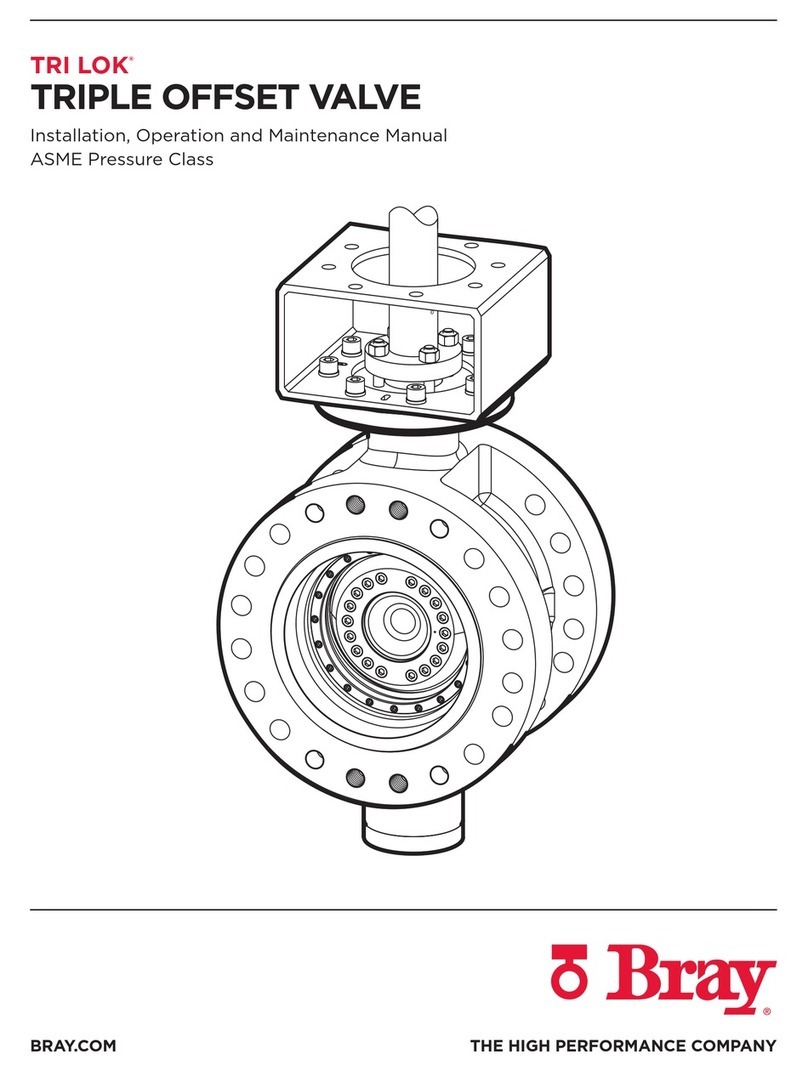
Bray
Bray TRI LOK Series User manual
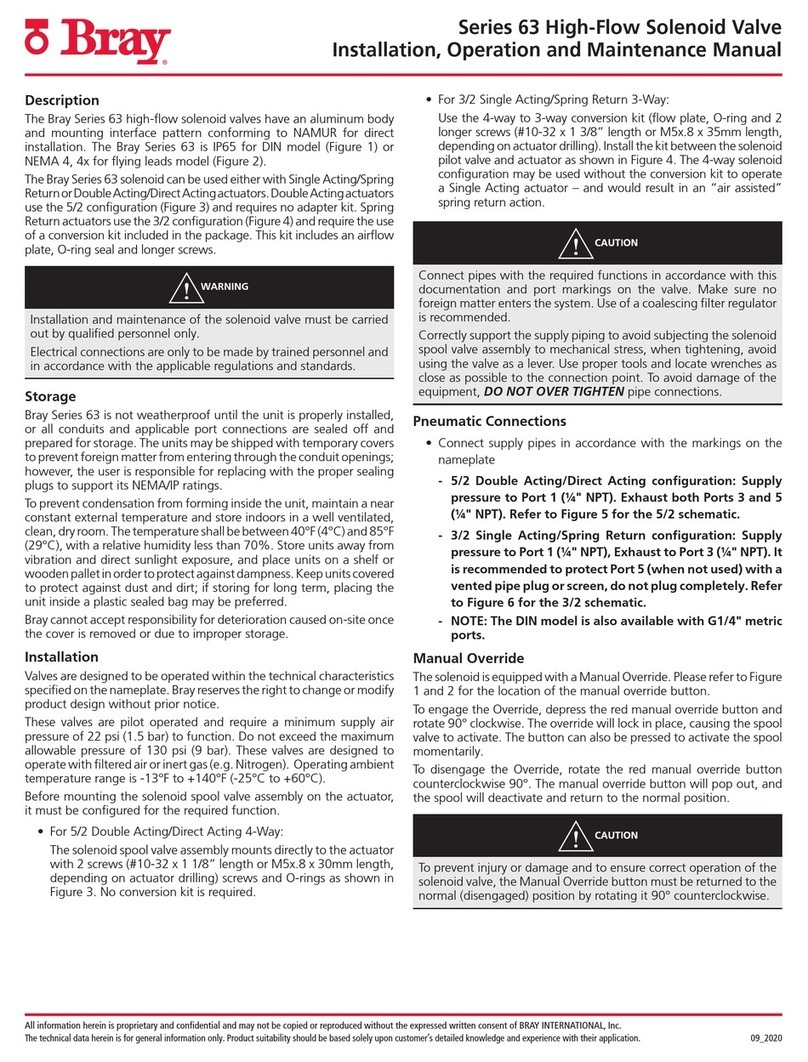
Bray
Bray 63 Series User manual
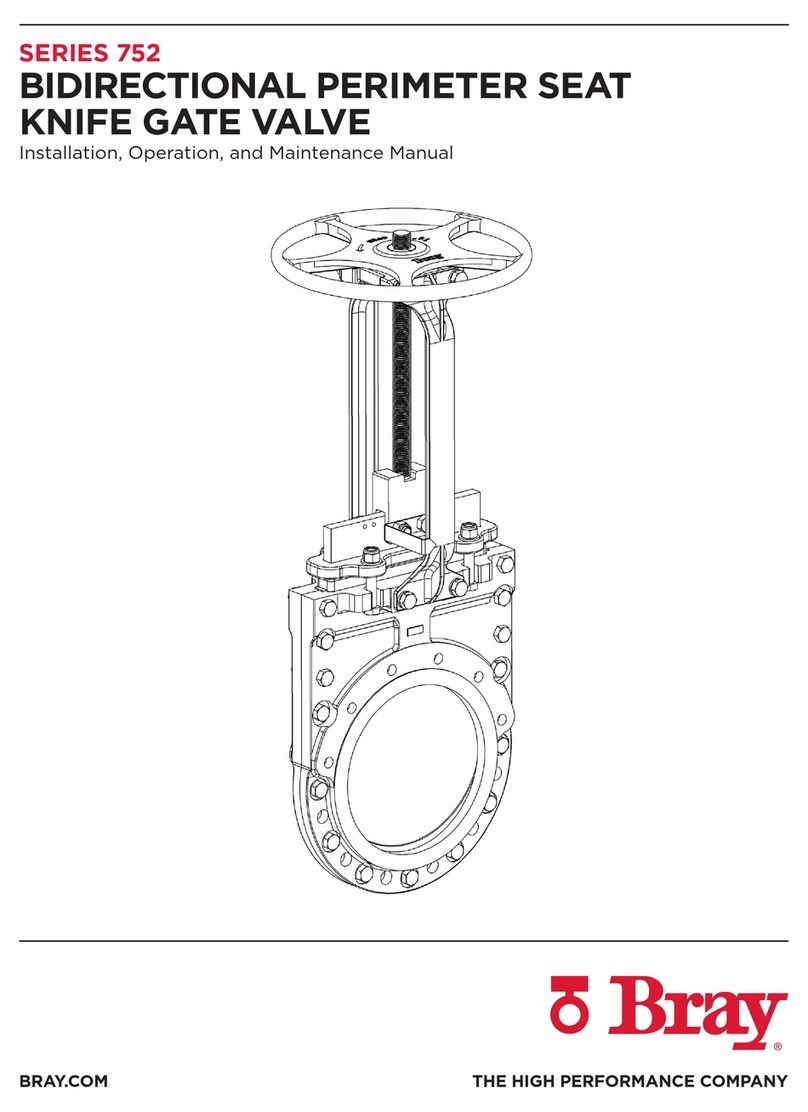
Bray
Bray 752 Series User manual
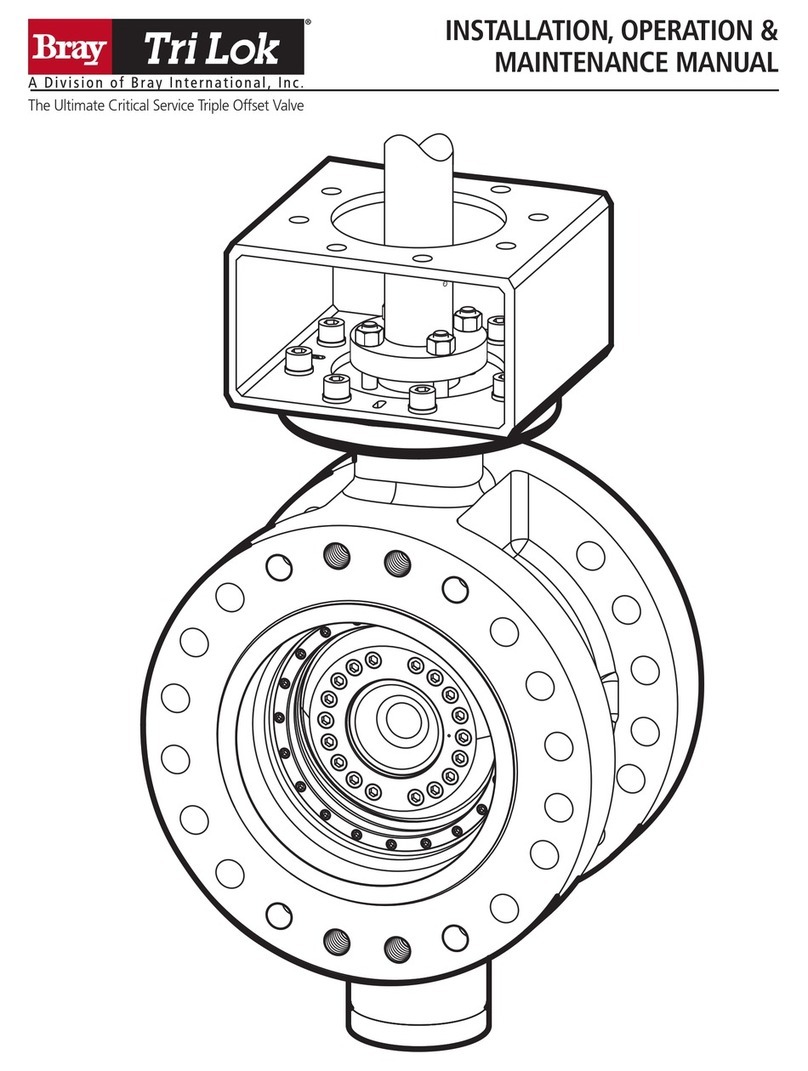
Bray
Bray TRI LOK Instruction manual
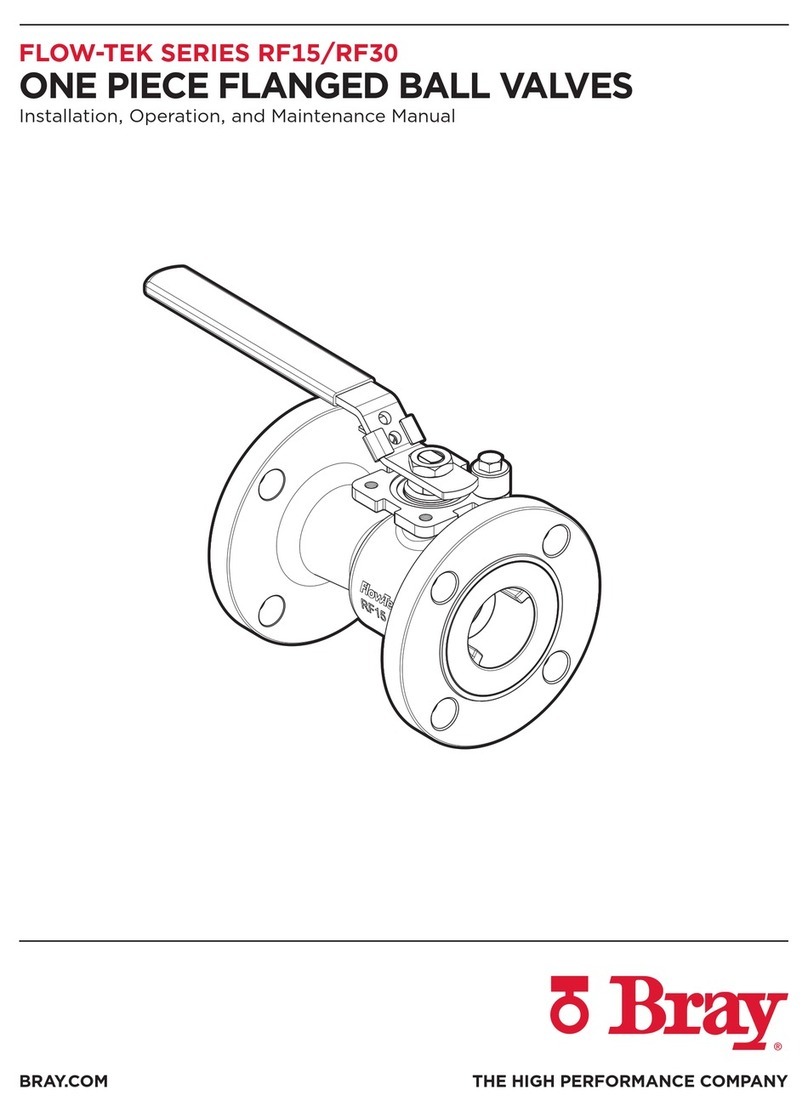
Bray
Bray FLOW-TEK Series User manual
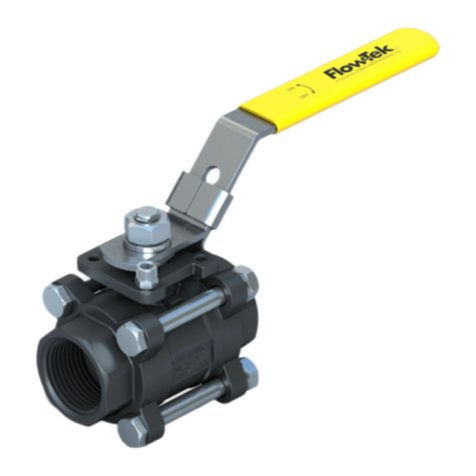
Bray
Bray Flow-Tek 5000 Series User manual

Bray
Bray TRI LOK Class 150 User manual
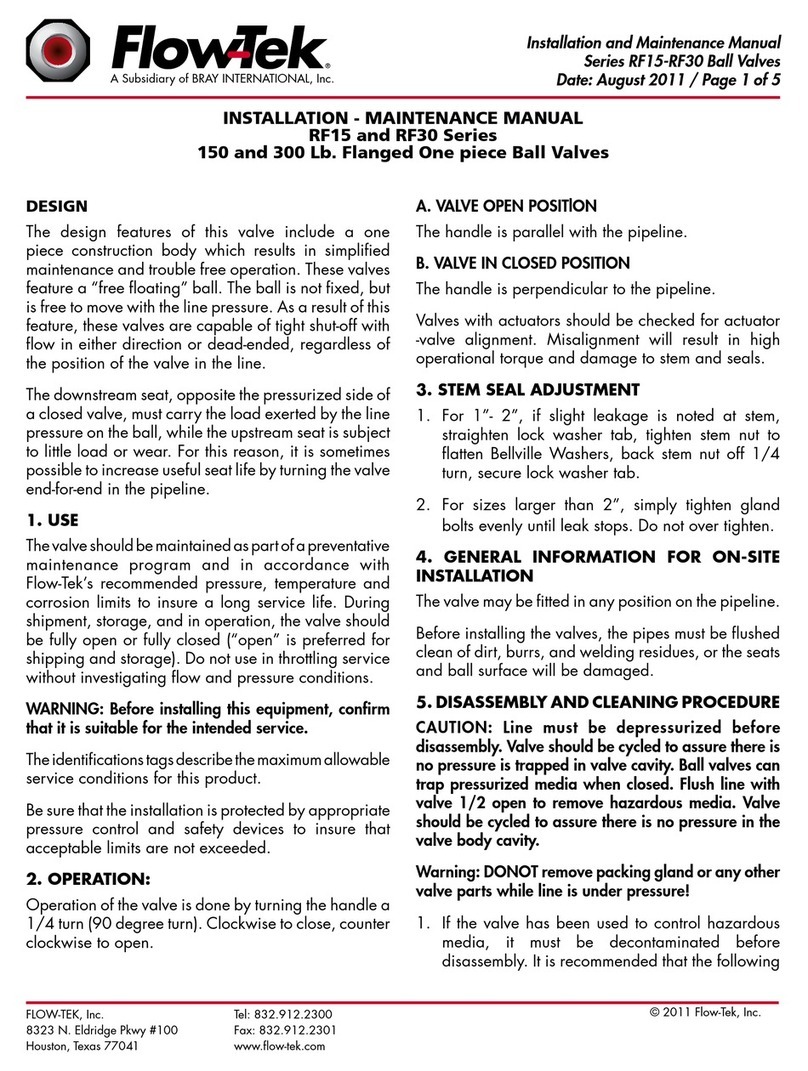
Bray
Bray RF15 Manual
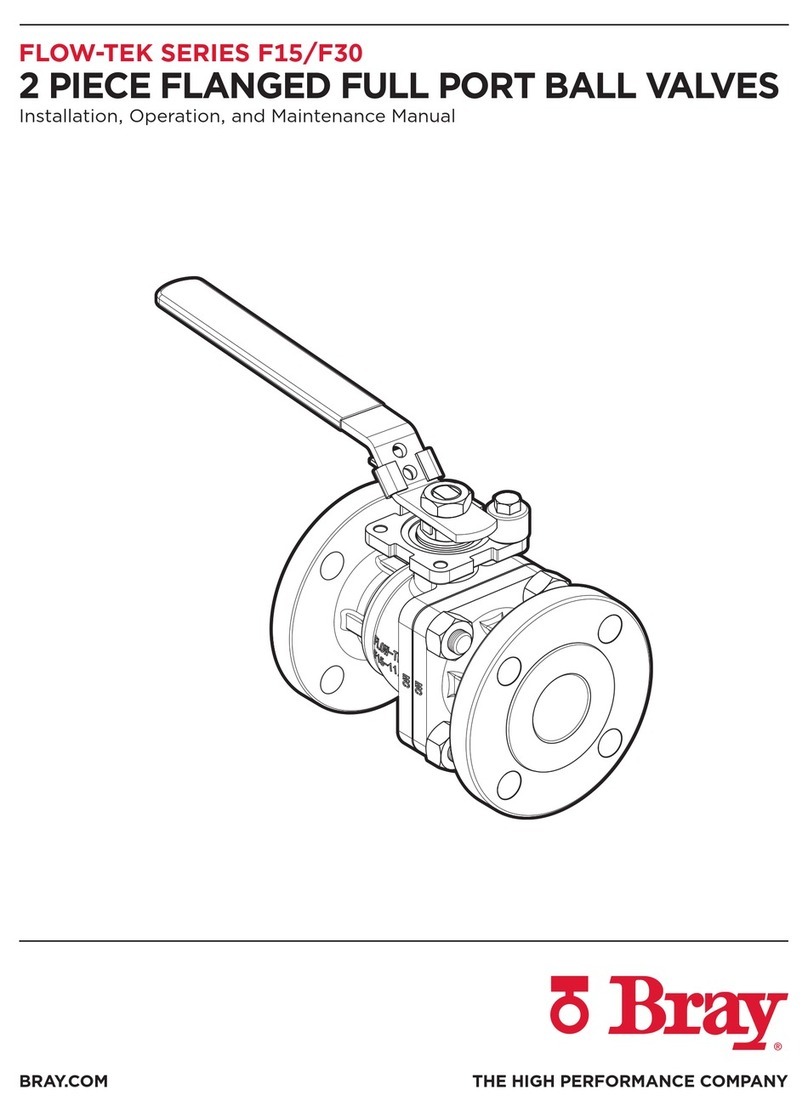
Bray
Bray FlowTek F30 Series User manual
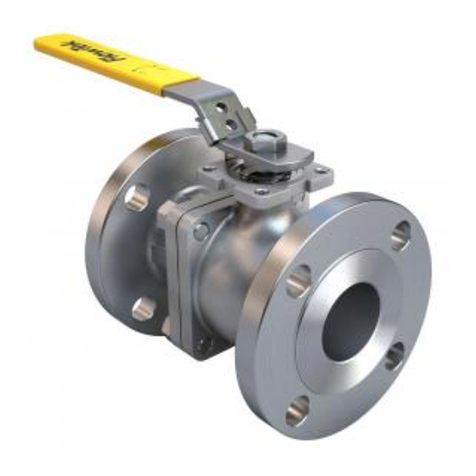
Bray
Bray FlowTek F15 Series User manual
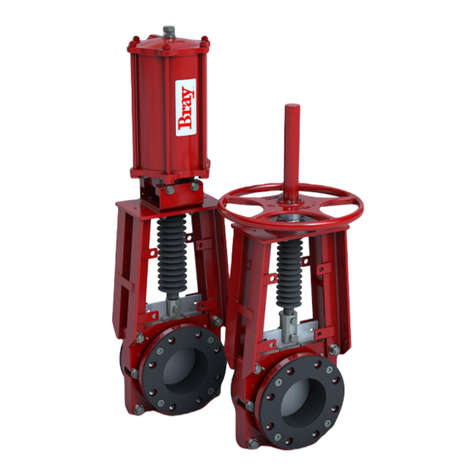
Bray
Bray 762 Series User manual
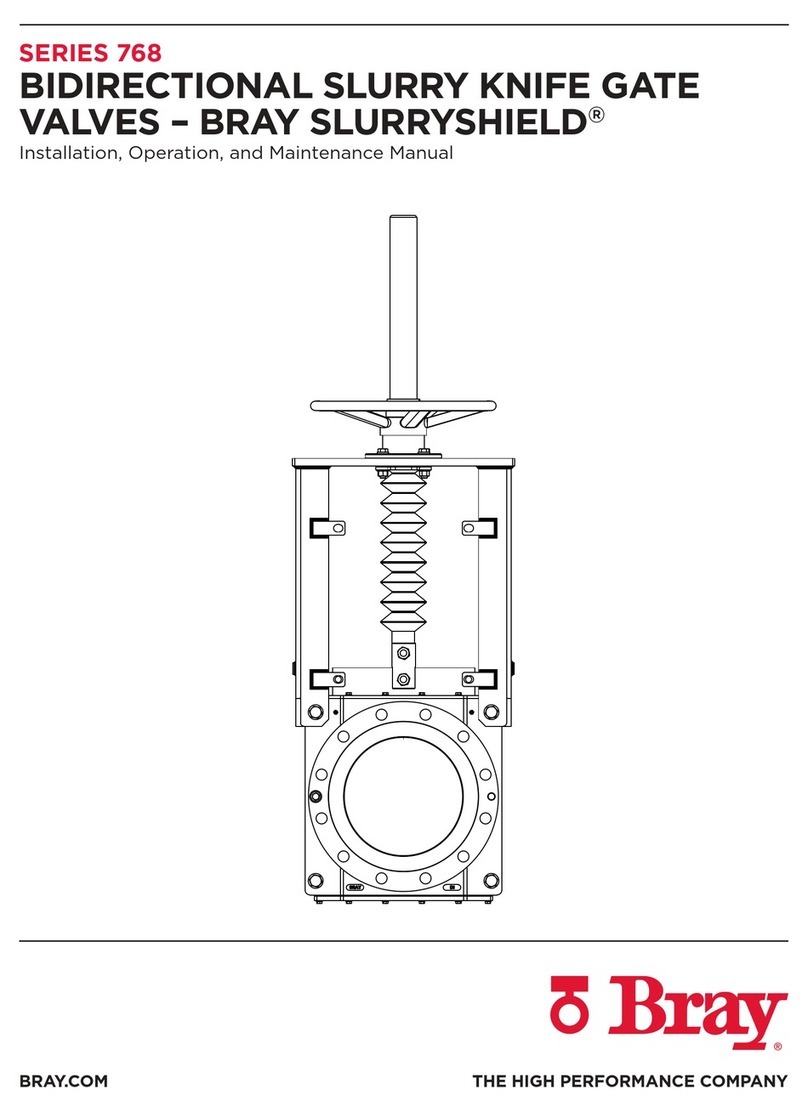
Bray
Bray 768 Series User manual
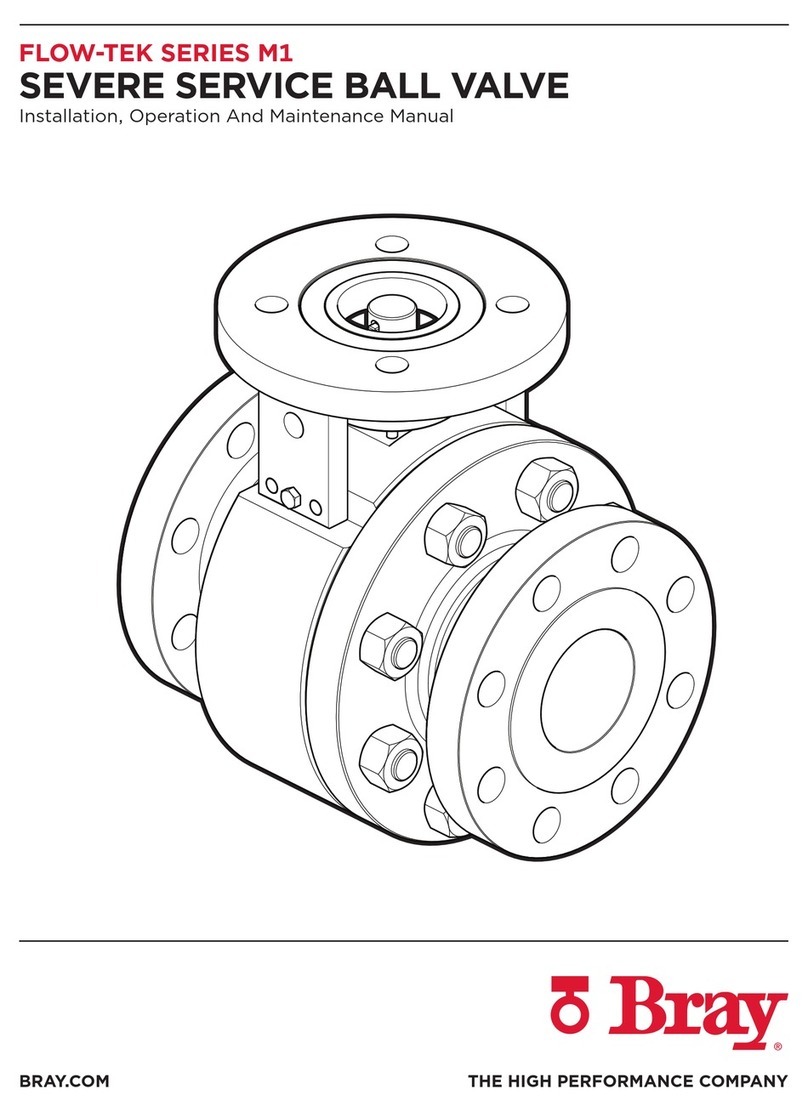
Bray
Bray FLOW-TEK M1 Series User manual

Bray
Bray TRI LOK User manual
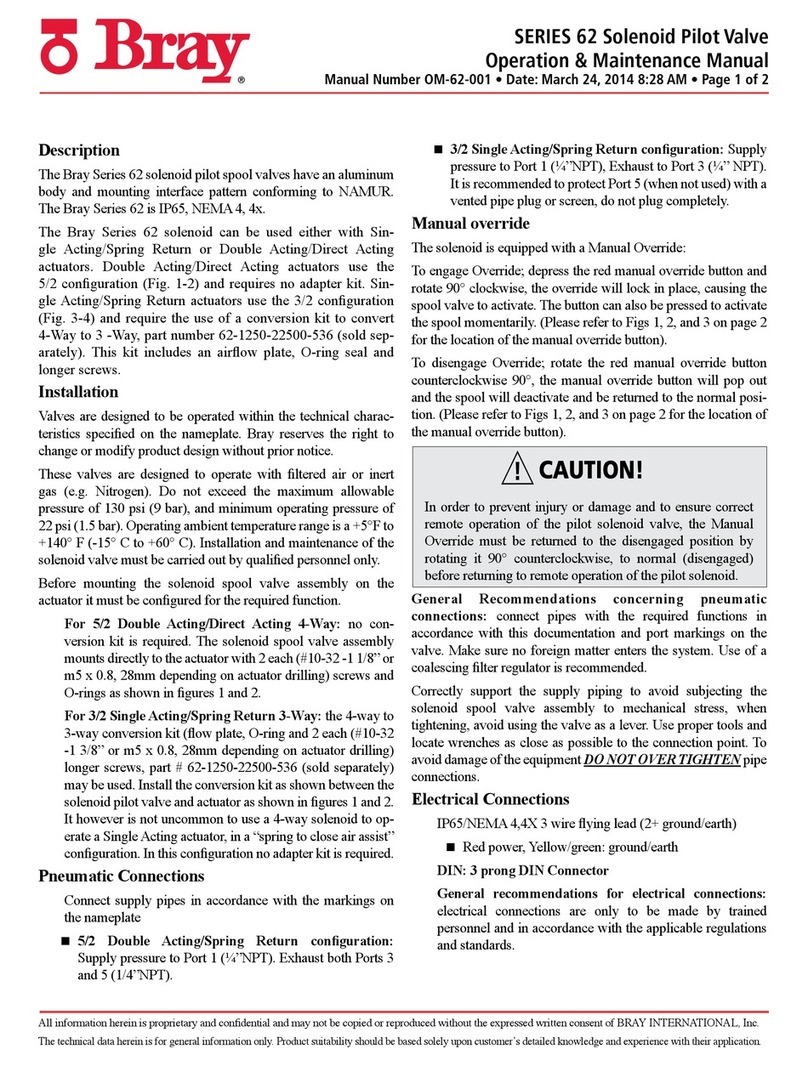
Bray
Bray 62 SERIES Manual

Bray
Bray FlowTek F15 Series Manual
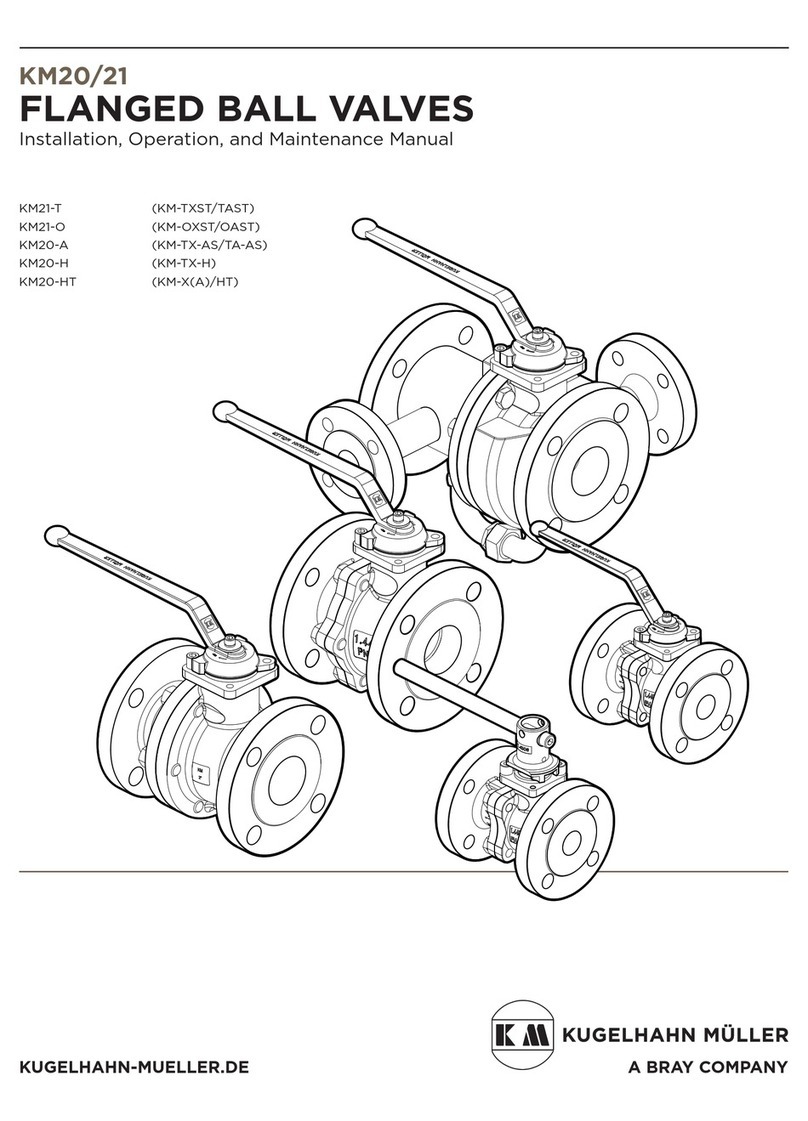
Bray
Bray KUGELHAHN MULLER KM20 User manual
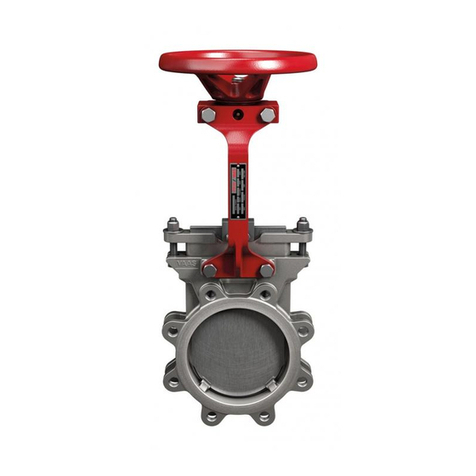
Bray
Bray 940 Series User manual

Bray
Bray TRI LOK User manual
